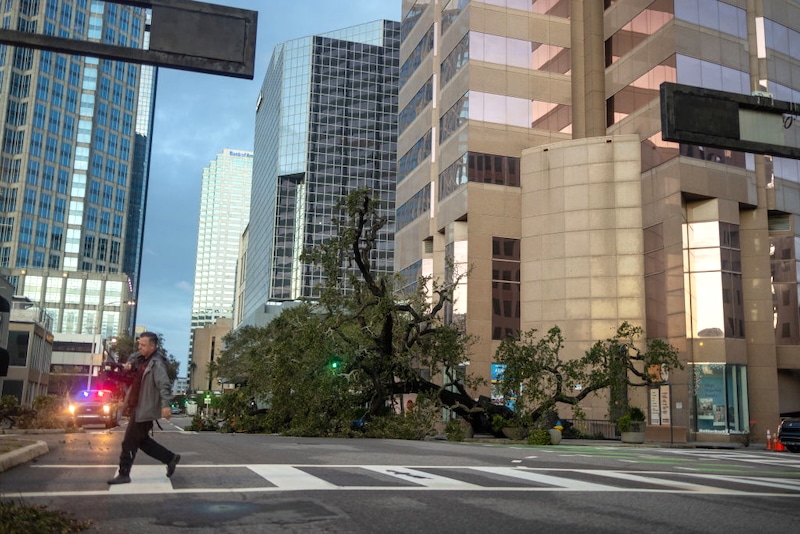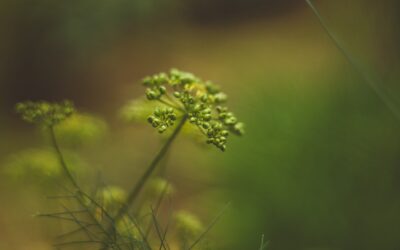This post was originally published on Eco Watch
The Arbor Day Foundation (ADF) has committed to planting 10 million trees in the next four years to replace those lost in six states impacted by Hurricanes Helene and Milton.
The trees will be planted in forestlands and communities in North Carolina, South Carolina, Florida, Tennessee, Virginia and Georgia, a press release from ADF said.
“In seeing the devastation of Helene and Milton, we felt a strong pull to make a bold commitment to recovery — and we weren’t alone. We received an outpouring of calls and emails from people eager to help the communities and forests impacted by these storms and we’re proud to be in a position to help make restoration happen,” said Dan Lambe, ADF’s chief executive officer, in the press release. “Human life and safety always take precedence in the wake of a natural disaster, so we don’t rush to replant. We collaborate with our on-the-ground planting partners to know when the time is right. And when they’re ready, we’ll be there with 10 million trees, prepared to put hope in motion.”
The global nonprofit said the precise impact to tree cover caused by the back-to-back hurricanes is still being determined, but it will be the biggest undertaking in ADF’s more than 50-year history, reported The Guardian.
ADF has worked in other areas impacted by storms, most recently with partners in Miami and along the Florida Panhandle and Gulf Coast following Hurricanes Michael and Irma.
“The emotion that you see from people when they get to get a tree, to take home to plant, to be an active part of recovery, bringing life and hope and healing back to their neighborhoods and to their community is inspiring,” Lambe said, as The Guardian reported.
After the most urgent humanitarian needs in the region have been addressed, ADF will collaborate with partners in both the public and private sectors, along with local tree planting organizations, to determine a replanting timeline, the press release said.
“What’s so cool about it is it’s every different part of the community you could imagine, every demographic, every age category. People are just so excited to be contributing to the recovery,” Lambe said, as reported by The Guardian. “And beyond the emotional side of it, in these cities, these communities and these forests, trees are not a nice-to-have, they are a must-have. From extreme heat, from biodiversity challenges, and ecosystem challenges to the just broader resilience and readiness for the next storm, trees just do so much for us. So it’s both an emotional and an environmental recovery, and we’re proud to get to be a part.”
Tampa Bay will be one of the largest focus areas. The region was heavily impacted by the gigantic wind fields of Hurricanes Debby, Milton and Helene.
“I was born and raised here, and I’ve never before seen such devastation, so many trees down,” said Debra Evenson, executive director of environmental organization Keep Tampa Bay Beautiful, one of ADF’s partners, as The Guardian reported. “Just on our property, at our office, we probably had five trees down. The devastation was everywhere. It wasn’t just one specific area, it hit all of Tampa Bay, just thousands and thousands of trees.”
More than 25,000 volunteers will assist with the Tampa Bay area project, with early attention being given to schools, community spaces and lower-income neighborhoods.
“It’s in the community, in people’s homes, where so many were lost. They’re crepe myrtles, live oak and magnolia trees… you don’t really understand everything the trees provide until they’re gone. It’s not just air quality, it’s reducing stormwater runoff, it’s providing shade that regulates temperature. We’re in Florida, it’s 100F sometimes, and it’s like ‘why is my electric bill so high?’ It’s because you’re missing your shade trees now,” Evenson explained.
She said they would also prioritize the replacement of fruit trees in areas that need them.
“We go into areas that are food deserts, where they don’t have the funds to replant these types of big trees that grow and give shade and bear fruit. To them, this is life-changing,” Evenson added.
Lambe said another area of enormous need was historic Asheville, North Carolina, a city torn apart by Helene’s damaging winds and torrential rainfall that led to deadly flooding.
“We’ve already been distributing trees with community leaders there, to neighborhoods that are ready to replant,” Lambe said, as reported by The Guardian. “It was shocking that a community like Asheville was being impacted by a hurricane, and they don’t have a lot of experience with recovery. We’ve been able to take lessons from elsewhere and remind partners that first of all you take an inventory, do an assessment, don’t rush the restoration.”
ADF has helped plant more than half a billion trees all over the world, assisting with recovery efforts following hurricanes, wildfires, tornadoes and floods in more than 60 nations since it began in 1972.
The post Arbor Day Foundation to Plant 10 Million Trees to Replace Those Destroyed by Hurricanes Helene and Milton appeared first on EcoWatch.




0 Comments